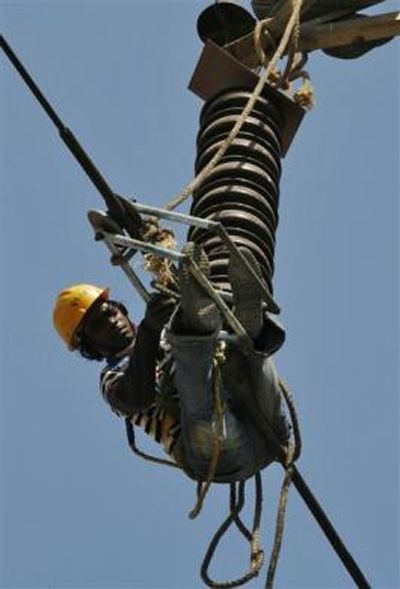
The Open Access policy under the Electricity Act, 2003, allows consumers with electricity load above 1 mw to procure power directly from markets.
Industries can use excess power generation capacity via open access in a push for Make in India while power discoms can explore the possibility of progressivity in tariff setting so that charges for the poor come down, suggested the Economic Survey.
"Time is ripe for industries to absorb excess generation capacity through Open Access to energise Make in India," said Economic Survey for 2015-16 tabled in Parliament on Friday.
The Open Access policy under the Electricity Act, 2003, allows consumers with electricity load above 1 mw to procure power directly from markets.
It was observed that some states have imposed significant curbs on the policy.
This problem was meant to be addressed by the National Tariff Policy (2006), which established a methodology for determining the cross-subsidy surcharge to be levied on OA consumers, with a goal of reducing it over a period of time.
"Nonetheless, cross-subsidy surcharges over the years have gone up," it found.
It noted that the new paradigm of surplus power sets the stage for continuing these reforms so that India can become 'one market' in power and the burden on industry can be mitigated, allowing it to become internationally competitive as envisaged under Make in India.
The report suggested that the tariffs can be made simple and transparent avoiding proliferation of end-use charges.
It also noted that charges for the poor could be reduced while generating more revenues by taking advantage of the possibility of greater progressivity in rate-setting.
The progressivity in power tariff rates means an increase in tariff with a higher consumption level.
This helps in reducing tariff for those who are at the bottom of society.
"Progressivity in tariff rates is to reduce burden on the poor without unduly burdening the rich. India's domestic power tariff schedules have greater scope for progressivity," it said.
It was pointed out that the cross-subsidisation will occur within the residential consumers itself -- rich consumers with high consumption intensity within residential sectors subsidise prices for consumers with lower consumption due to differential demand price elasticity.
On progressivity in tariff, the Survey said, "States and their regulators will have a key role to play, with helpful facilitation from the Centre.
“The power sector is a perfect crucible for making effective co-operative competitive federalism experiment, that is now India." it said.
The Economic Survey also stated that back-of-the-envelope calculations show that the additional revenue of approximately Rs 14,400 crore (Rs 144 billion) annually for states can be used by distribution companies to reduce losses or rationalise cross-subsidies.
In the current scenario, there are no specific policy guidelines on the intra-category cross subsidisation or subsidy provisioning.
It noted that significant non-price barriers exist in states that do not cross-subsidise to a great extent, but where discoms derive the bulk of their revenues coming from the industry.
According to the survey, countries such as Bangladesh, Sri Lanka, South Korea, Vietnam and Brazil appear to better exploit the progressivity of electricity tariffs in the domestic category.
This is borne out by a higher ratio of tariffs charged to the rich relative to the poor.
"In contrast, the state that we have studied appears to discriminate much less between the rich and the poor, leaving scope for greater exploitation of progressivity," it added.
It observed that power generation capacity has increased while financial ability of discoms to purchase electricity has diminished, which has resulted in current power plant load factor reaching the lowest mark of around 60 per cent.
The compounded annual growth rate of captive power generation between 2006-07 and 2014-15 is 9.3 per cent as against 4.6 per cent for electricity procured from utilities.
This could worsen in coming years as the decline in oil prices and cost of renewable energy alternatives may prompt a further shift to captive power, it predicted.
It also noted that the electricity tariff is unusually high for the Indian industry, especially when quality is taken into consideration.
According to the report, the use of diesel generators in on the rise to cushion against uneven power supply, with total capacity at around 72 gw and growing at 5 gw per year.
High tariffs and erratic supply have led to a slow but steady decline in the growth of industrial electricity purchases from utilities and a gradual transition towards captive generation, it said.
The image is used for representational purpose only. Photograph: Reuters









